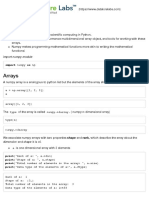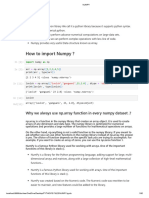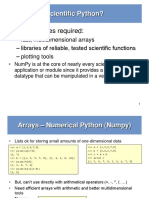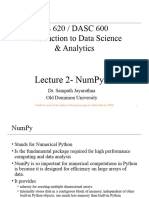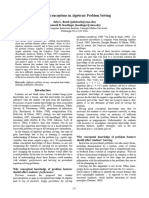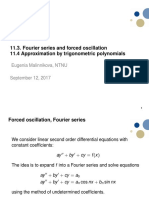0% found this document useful (0 votes)
49 views11 pagesNumPy Intro
NumPy is a Python library used for working with multi-dimensional arrays and matrices for mathematical, scientific, and engineering applications. It allows operations on arrays such as mathematical, logical, shape manipulation, Fourier transforms, and linear algebra operations. NumPy can be used to represent multi-dimensional data, generate random numbers, and perform operations such as indexing, slicing, arithmetic, statistical, and linear algebra calculations on arrays.
Uploaded by
taslim.developerCopyright
© © All Rights Reserved
We take content rights seriously. If you suspect this is your content, claim it here.
Available Formats
Download as PDF, TXT or read online on Scribd
0% found this document useful (0 votes)
49 views11 pagesNumPy Intro
NumPy is a Python library used for working with multi-dimensional arrays and matrices for mathematical, scientific, and engineering applications. It allows operations on arrays such as mathematical, logical, shape manipulation, Fourier transforms, and linear algebra operations. NumPy can be used to represent multi-dimensional data, generate random numbers, and perform operations such as indexing, slicing, arithmetic, statistical, and linear algebra calculations on arrays.
Uploaded by
taslim.developerCopyright
© © All Rights Reserved
We take content rights seriously. If you suspect this is your content, claim it here.
Available Formats
Download as PDF, TXT or read online on Scribd
/ 11

